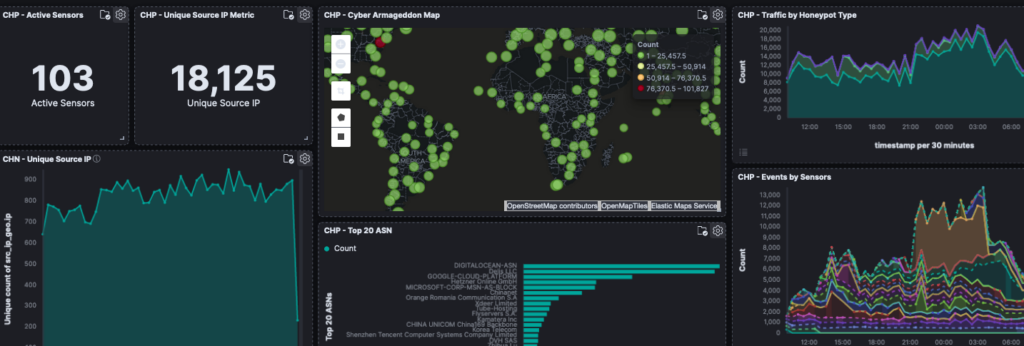Foundation Projects
Cybersecurity: Honeynet threat sharing
Asia Pacific Network Information Centre (APNIC)
The APNIC Community Honeynet Project was initiated in 2019. The project collects threat data such as suspicious traffic and malware samples from honeypot sensors. The project hosts and maintains backend infrastructure for data collection, analysis and sharing with partners, actively providing daily feeds to Dashboard for Autonomous System Health (DASH). Various security engagement activities are also carried out based on observations from the data collected.
The APNIC Foundation began supporting the project in 2022.
Objectives
The project seeks to collect threat data such as suspicious traffic and malware samples from honeypot sensors by hosting and maintaining backend infrastructure for data collection, analysis and sharing with partners. This will be achieved through the following:
- Sensor deployments. Build and deploy honeypot sensors and maintain a scalable infrastructure of honeypot sensor network.
- Processing and analysis. Collect and process the data collected, including logs and malware samples.
Benefits to the Internet Community
- Provide cybersecurity knowledge to the community and facilitate collaboration to help ensure a secure Internet.

This is a multi-year project. For budget information, see the relevant annual reports.
In 2024:
In 2024, the Community Honeynet Project continued to grow. The following are some of the highlights
- Quarterly threat sharing sessions were conducted to share insights related to observations and information collected. Including presentations in Hong Kong, Thailand, Brunei, Pakistan and Bangladesh.
- Continued to provide feeds to APNIC members via DASH. Additionally, feeds were also provided to ShadowServer Foundation and MISP (Threat Sharing Platform) that are used by the security community globally
- 200 additional sensors were deployed making the total number of honeypot sensors to 400.
Related:


